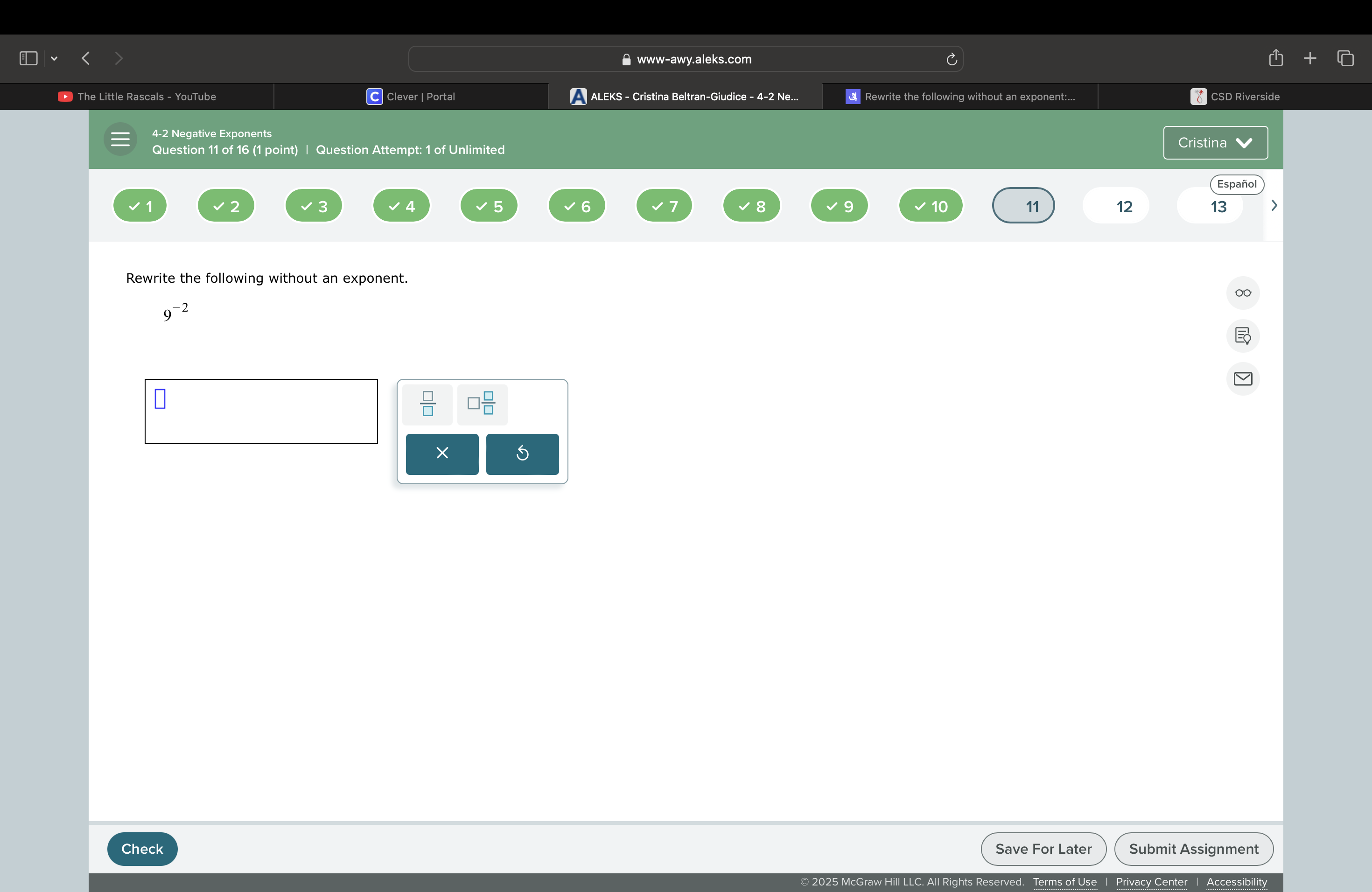Rewrite the following without an exponent: g^{-2}

Understand the Problem
The question is asking to rewrite the expression g^{-2} without using an exponent. This involves applying the rule that states that a negative exponent indicates the reciprocal of the base raised to the positive exponent.
Answer
The expression \( g^{-2} \) can be rewritten as \( \frac{1}{g^2} \).
Answer for screen readers
The expression ( g^{-2} ) rewritten without an exponent is ( \frac{1}{g^2} ).
Steps to Solve
-
Identify the negative exponent We have the expression ( g^{-2} ). The negative exponent indicates that we need to take the reciprocal of the base ( g ).
-
Apply the reciprocal rule The reciprocal of ( g^{-2} ) can be rewritten using the positive exponent. This means we change the expression to ( \frac{1}{g^2} ).
-
Write the final expression Thus, the expression without an exponent is ( \frac{1}{g^2} ).
The expression ( g^{-2} ) rewritten without an exponent is ( \frac{1}{g^2} ).
More Information
In mathematics, negative exponents indicate that the base should be taken as the reciprocal, raised to the corresponding positive exponent. This is a key concept in simplifying expressions involving exponents.
Tips
One common mistake is forgetting to take the reciprocal and instead trying to convert the negative exponent to a positive one without adjusting the base. Always remember to use the reciprocal when the exponent is negative.
AI-generated content may contain errors. Please verify critical information